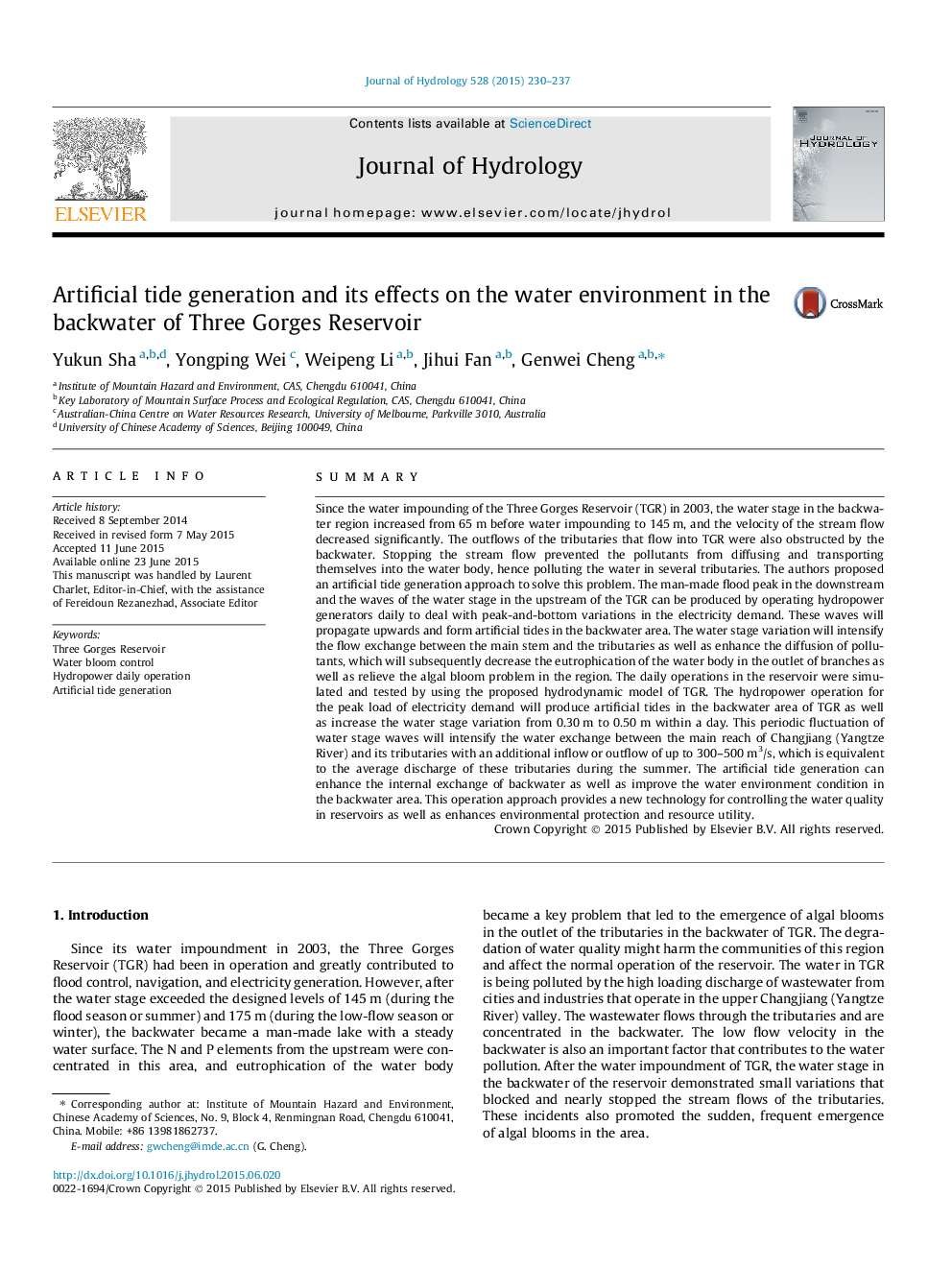| کد مقاله | کد نشریه | سال انتشار | مقاله انگلیسی | نسخه تمام متن |
|---|---|---|---|---|
| 6410888 | 1629922 | 2015 | 8 صفحه PDF | دانلود رایگان |
- The hydropower daily operation will produce artificial tides in the backwater area.
- A proposed artificial tide generation approach will intensify the water exchange.
- 1-D hydraulic model is introduced to simulate the daily regulation of hydropower.
- The water fluctuation will relieve the algal booms problem.
SummarySince the water impounding of the Three Gorges Reservoir (TGR) in 2003, the water stage in the backwater region increased from 65Â m before water impounding to 145Â m, and the velocity of the stream flow decreased significantly. The outflows of the tributaries that flow into TGR were also obstructed by the backwater. Stopping the stream flow prevented the pollutants from diffusing and transporting themselves into the water body, hence polluting the water in several tributaries. The authors proposed an artificial tide generation approach to solve this problem. The man-made flood peak in the downstream and the waves of the water stage in the upstream of the TGR can be produced by operating hydropower generators daily to deal with peak-and-bottom variations in the electricity demand. These waves will propagate upwards and form artificial tides in the backwater area. The water stage variation will intensify the flow exchange between the main stem and the tributaries as well as enhance the diffusion of pollutants, which will subsequently decrease the eutrophication of the water body in the outlet of branches as well as relieve the algal bloom problem in the region. The daily operations in the reservoir were simulated and tested by using the proposed hydrodynamic model of TGR. The hydropower operation for the peak load of electricity demand will produce artificial tides in the backwater area of TGR as well as increase the water stage variation from 0.30Â m to 0.50Â m within a day. This periodic fluctuation of water stage waves will intensify the water exchange between the main reach of Changjiang (Yangtze River) and its tributaries with an additional inflow or outflow of up to 300-500Â m3/s, which is equivalent to the average discharge of these tributaries during the summer. The artificial tide generation can enhance the internal exchange of backwater as well as improve the water environment condition in the backwater area. This operation approach provides a new technology for controlling the water quality in reservoirs as well as enhances environmental protection and resource utility.
Journal: Journal of Hydrology - Volume 528, September 2015, Pages 230-237
